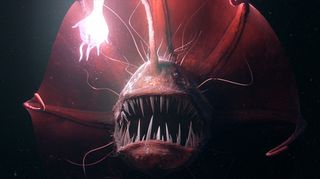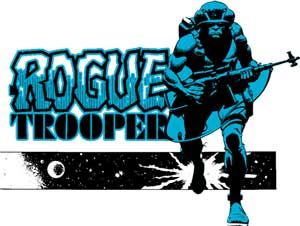
Founded in 1984 as one of the pioneers of computer generated imagery, Paris-based company BUF is one of the most established VFX studios in the world. It's created stunning visual effects for more than 100 films and 850 commercials, attracted repeat clients such as Christopher Nolan and the Wachowski brothers, and is widely known for the 'bullet time effect' seen in The Matrix, originally developed for Michel Gondry's video clips.
Employing 200 people in its Paris, Belgium and Montreal facilties and an office in LA, BUF is one of the biggest names in VFX. Here we take a look at just a few of the incredible scenes it's worked on.
01. Life of Pi
In Life of Pi, Buf was responsible for the "tiger vision" sequence where Richard Parker peers down and sees a squid and whale attack, which then turns into a surreal sequence involving an underwater menagerie, cultimating in a "galactic view" of Pi's mother.
The original brief for director Ang Lee was opened ended which gave the BUF team under VFX supervisor Geoffrey Niquet the chance to get creative. But while they got to unleash their imagination on the scene, the challenges were immense.
There are so many interdependent elements - some designed by other studios - and all needed to be choreographed in a way that looked continuous and fluid. Add to that the requirement for stereoscopic 3D and this was a massive challenge.
Blur and particles
There were a lot of specific challenges too. For example, the aquatic environment couldn't look empty, so it was dressed with blur effects and particles - and moving these one section to another was particularly tricky in a scene in which the camera speed and angle keeps changing.
There was also the question of light: to be realistic, the viewer should be in the dark after a few metres, but that wouldn't have been very entertaining. So an artistic compromise had to be created with light that let the audience see everything without looking too fake. Hair was also an issue, as it moves underwater in a different way to normal, so a lot of work had to be done to get that right
Get the Creative Bloq Newsletter
Daily design news, reviews, how-tos and more, as picked by the editors.
Of course, these were just problems for the team to overcome; the viewer doesn't notice a thing but is swept along with the surreal beauty of the whole scene. A real technical and artistic triumph for BUF.
02. Thor
Thor is an American superhero film directed by Kenneth Branagh about a god who is exiled from his homeland planet of Asgard to Earth. BUF was tasked with designing the "cosmos sequence" where the viewer approaches Asgard from space.
The challenge was to represent space in a realistic way without straying too far from the visuals of the original Thor comic book. The BUF team took inspiration from nebula, fractal imagery, and Jack Kirby's original comic art as reference.
They blended recognizable shapes with imagery from the Hubble telescope and pictures from Celtic mythology, as well as using 3D particles rendered as smoke, volumetric shading, highly detailed textures and recursive modeling.
Volcanic inspiration
For the design of Asgard itself, they referenced the volcanic island of Bora Bora, while Salto Angel Falls in Venezuela was used as a reference for the ocean.
The team also created key scenes in the movie where characters travel from one realm to another across a ray of light called the Bifrost. The concept for how the characters would appear during this journey was inspired by the effect of a jet engine, making people look as if they are being lifted, pulled and stretched.
In the final act, Thor and Lok fight on the Rainbow Bridge. This scene was partly shot on green screen, and BUF then generated CG doubles for the actors. BUF then rotoscoped the real actors and applied photographic textures to the models. You can read more about how the effects were achieved in this movie here.
03. Avatar
For Avatar, BUF created the scene showing the transfer of a human soul leaving their body to inhabit an Avatar. These shots were to be delivered in stereoscopic 3D, and needed to make the audience feel they were travelling through the tunnel along with the character.
The effect was achieved by layering tunnels of different diameters. These layers consist of a variety of elements, from organic materials based on neural networks to energy fluxes such as rays of light and flashes of lightning. The main challenge was to make these images recognisable within the fast-moving scene and motion blur.
The various tunnels were set up independently, computed according to the camera trajectory, then composited together. Lights were automatically generated to precede the camera through the tunnel in order to light the end, and give the impression to the audience that they are following the light.
As shown in the compilation video above, BUF also developed the VFX for a number of Earth based scenes which were included in the extended edition of the movie, during the intro. You can read more about how the effects were achieved in this movie here.
04. Dark Knight
The Dark Knight was the third movie in which BUF collaborated with director Christopher Nolan and his team. Pierre Buffin, VFX Supervisor Dominique Vidal and the team were assigned the spectacular opening shot and the creation of Batman's 'Spy Vision'.
In the film, Bruce Wayne develops a new technology that enables him to visualize in three dimensions any environment in which a mobile phone is turned on. Nolan wanted the waves to bounce back off obstacles, but also to partly travel through them.
In addition, the device needed to feel harmless, and not look like X-Ray. To bring this concept to life, BUF's in-house R & D team led by Xavier Bec did countless tests with sonar, waves, metaballs, smoke, particles and more.
The final wave animation was created using BUF's proprietary software, and BUF also designed the environments in which the 'Spy Vision' is used. It plays a key role in the Prewitt building sequence, where Batman uses it to locate hostages, and in the Batcave, where dozens of monitors visualize different locations - an environment similar to the Architect Room that BUF created for The Matrix Reloaded.
05. Odd Thomas
Director Stephen Sommers first worked with BUF in 2004 on Van Helsing. And he was keen to get them back on board for this year's big horror movie Odd Thomas, the story of a young man who can see ghostly creatures called Bodachs, based on the bestselling novel by Dean Koontz.
BUF needed to create a very complex setup and skeleton for the Bodachs so that they would never have the same amount of arms or legs during a shot, nor a determined number of heads. They needed to be so complex that they would be very hard for the audience to catch, especially at the beginning of the movie. In other words, BUF had to create animated characters that moved like nothing you've ever seen. Not an easy task.
Erratic movements
The team created models based on spiders and cockroaches, then took these models and added strange and erratic moves and trajectories to make them more unrecognisable and unpredictable.
Sommers wanted the Bodach to look a bit like ghosts but avoiding the cliched 'smoky' effect. So instead BUF used a more complex transparency-refractive render, which gave the creature an almost gaseous look.
Starting with a refractive render BUF added transparency textures pulsing all over the surface and inside the Bodachs, revealing only few parts of the creatives while never showing their entire shape. You can read more about how the effects were achieved in this movie here.
Win a trip to Los Angeles!

Masters of CG is a competition for EU residents that offers the one-in-a-lifetime chance to work with one of 2000AD's most iconic characters: Rogue Trooper.
We invite you to form a team (of up to four participants) and tackle as many of our four categories as you wish - Title Sequence, Main Shots, Film Poster or Idents. For full details of how to enter and to get your Competition Information Pack, head to the Masters of CG website now.
Enter the competition today!

Thank you for reading 5 articles this month* Join now for unlimited access
Enjoy your first month for just £1 / $1 / €1
*Read 5 free articles per month without a subscription

Join now for unlimited access
Try first month for just £1 / $1 / €1

Tom May is an award-winning journalist and editor specialising in design, photography and technology. Author of the Amazon #1 bestseller Great TED Talks: Creativity, published by Pavilion Books, Tom was previously editor of Professional Photography magazine, associate editor at Creative Bloq, and deputy editor at net magazine. Today, he is a regular contributor to Creative Bloq and its sister sites Digital Camera World, T3.com and Tech Radar. He also writes for Creative Boom and works on content marketing projects.